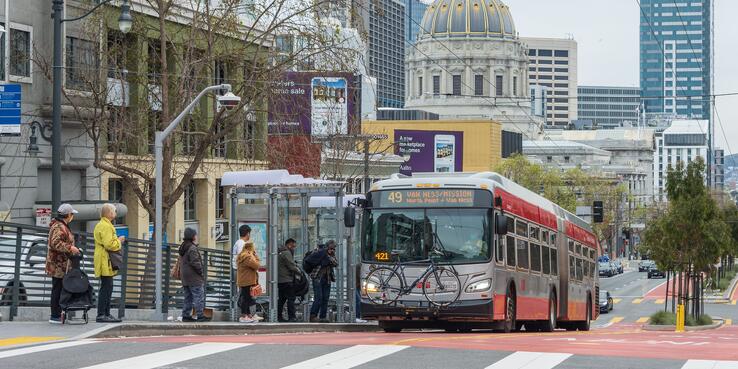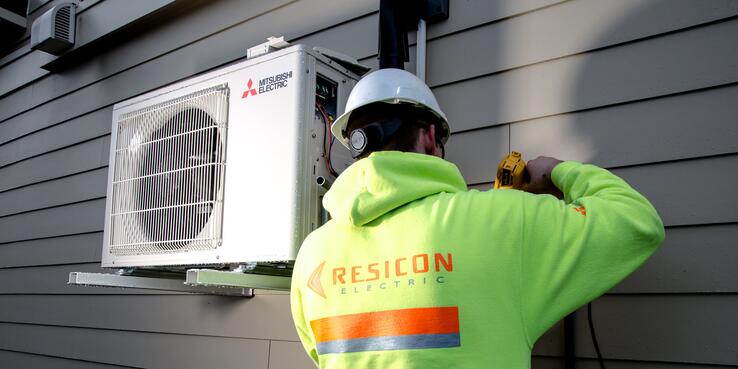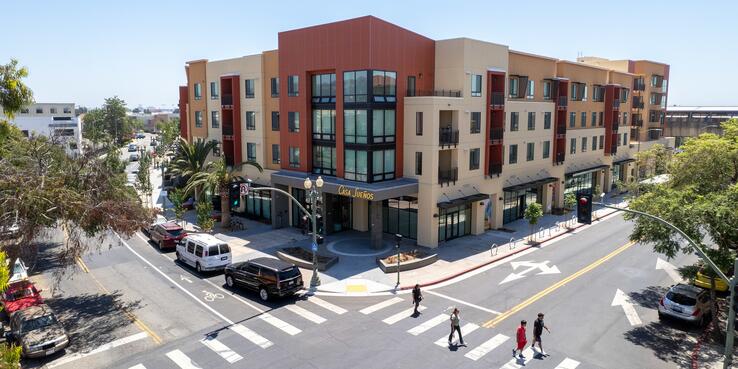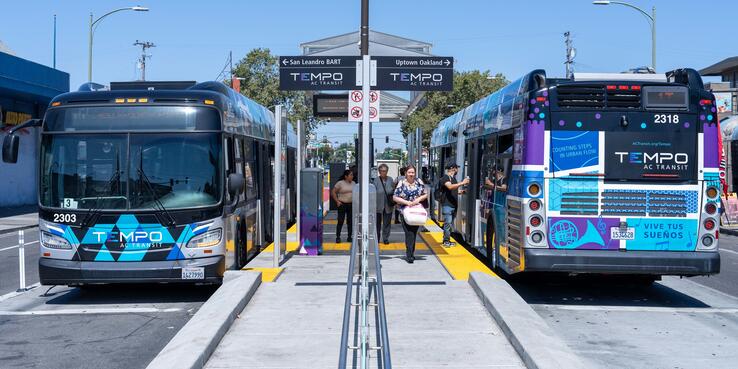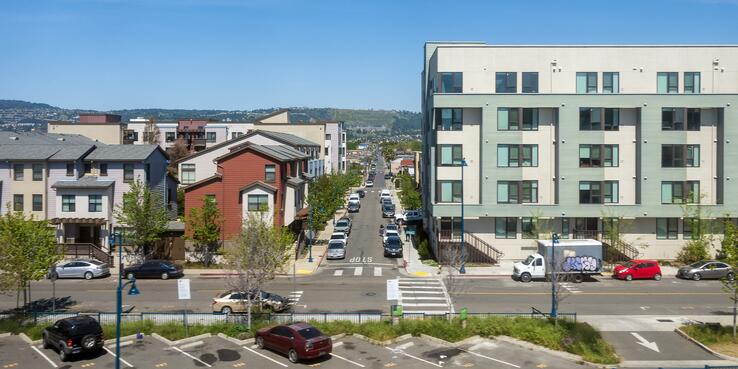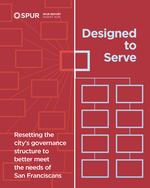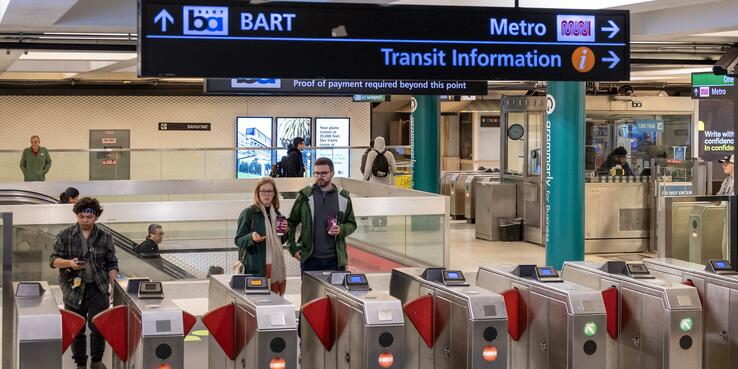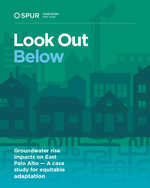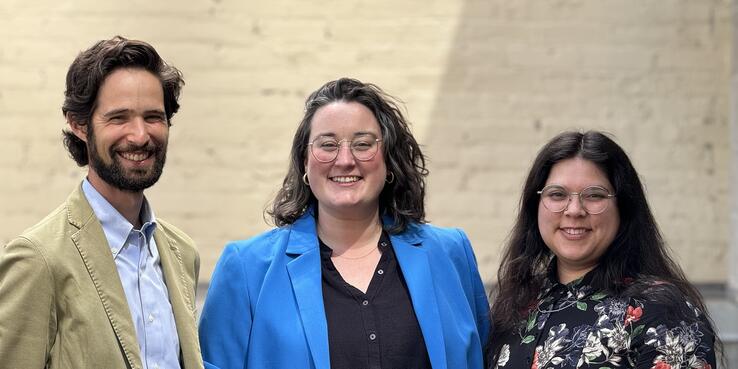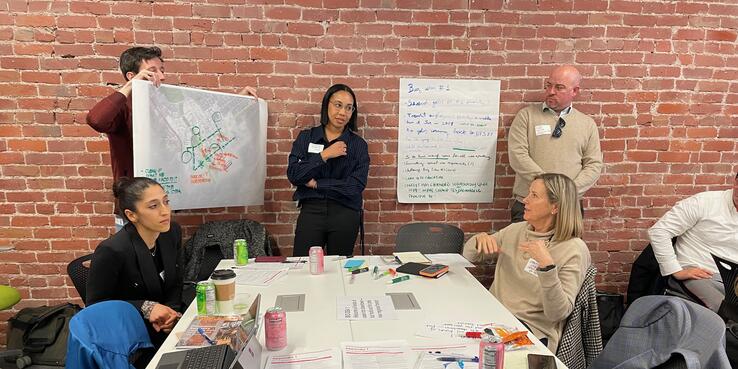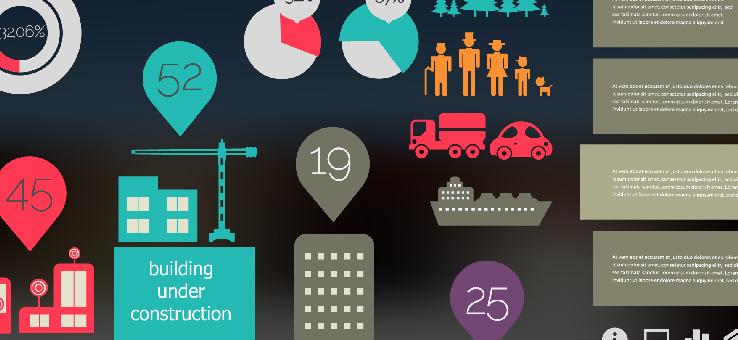
Take It From a Critic — Muni Is Actually Doing Great
News / As an advocate for high-quality transit, SPUR has at times been one of Muni’s critics. In a 2005 report, we argued that the agency was in a downward spiral, but now Muni appears to be enjoying a virtuous cycle. That cycle can only continue with voter support of Propositions L and M on the November ballot.
Six SPUR-Sponsored Bills Will Become California Law
News / The 2024 state legislative year ended with a number of big wins for SPUR and our partners in affordable housing and transportation advocacy. Governor Newsom signed hundreds of bills into law, including six pieces of SPUR-sponsored legislation that will make housing faster and easier to build, support development of interim housing for unhoused people, and make dangerous roads safer for pedestrians and bicyclists.
Smoothing the Transition to Heat Pumps, Part 2: Permitting and Inspections
News / As the Bay Area phases out sales of gas furnaces and water heaters, more and more property owners will need to install zero-pollution, high-efficiency electric heat pumps in homes. But the current process is complicated and expensive. City planners must quickly make that installation easier and more affordable. In a previous article, SPUR recommended zoning code strategies. In this installment, we explore permitting and inspection improvements.
The Loma Prieta Earthquake Inspired Major Resilience Efforts. Today, the Need to Invest Continues.
News / 35 years ago this week, the Loma Prieta earthquake was a wakeup call the Bay Area heeded. In the years since the magnitude 6.9 quake hit, state, regional, and municipal action has improved the seismic safety of the region’s buildings and other infrastructure. However, gaps remain in the region’s preparedness for the estimated 51% chance of a magnitude 7.0 earthquake in the next 30 years.
California Delivers Wins for Building Decarbonization
News / Moving California’s homes and other buildings off of health- and climate-harming gas heating will require a transition to electric heat pumps. This year, the state pressed some legislative and regulatory levers to speed that process. SPUR recommendations and advocacy helped shape these building decarbonization wins.
Prop. 5: Giving Communities Better Tools to Invest in Housing, Parks, and More
News / Local bond measures to fund essential services often garner the support of a majority at the ballot box yet fail to pass because they don’t meet California’s requirement that bonds be approved by a two-thirds supermajority. Proposition 5 would amend the state constitution to lower the voter approval threshold for bonds to fund housing, infrastructure, wildfire prevention, and parks.
Funding Regional Transit — and Managing Risk in Uncertain Times
News / SPUR is serving on an MTC-appointed select committee to explore legislation that would put a regional transit revenue measure on the ballot in a future election. Two other regional funding measure efforts — SB 1031 for transit, and the BAHFA bond for housing — were both paused earlier this year, casting a cautionary light on regional funding measures. Our recent comments to the committee focus on how to set up the current transit proposal for success.
Prop 4: Investing Now to Cut Future Climate Costs
News / California is already paying the cost of climate change impacts from devastating wildfires, droughts, floods, and other extreme weather events. By investing in climate action now, voters can reduce future costs both economic and social. California Prop. 4 would put $10 billion toward safe drinking water, drought resilience, ecosystem restoration, resilience to natural hazards, and more.
How a Governance Reset Could Improve San Franciscans’ Well-Being: Q&A with Nicole Neditch
News / San Francisco's system of governance has evolved over the decades into a complex web, making it hard for the city to implement policies and serve residents effectively. We spoke with Nicole Neditch about a new SPUR report that breaks down this complexity and proposes a redesign focused on leadership, empowerment, and accountability.
Smoothing the Transition to Heat Pumps, Part 1: Code Changes
News / As the Bay Area phases out sales of gas furnaces and water heaters, more and more property owners will need to install zero-pollution, high-efficiency electric heat pumps in homes. City planners must quickly make these installations easier and more affordable by amending municipal zoning ordinances and permitting processes. In the first article of a series on accelerating heat pump adoption, SPUR recommends four zoning code strategies.
It’s California’s Duty to Make Streets Safe for All Users
News / In 2023, an estimated 4,000 people died on California’s roadways. More than 30% of these traffic deaths happened on state-owned roads. It doesn’t have to be this way. SPUR — together with CalBike, WalkSF, StreetsforAll, KidSafeSF, and AARP California — is sponsoring Senate Bill 960 to make state roads that function as local streets safer by design. In this article, we share testimony from a California mom who lost her husband to a collision that safer street design could have prevented.
SPUR Sponsors State Bills to Promote Housing Production
News / Among the many state housing bills SPUR is advocating for this year, we are sponsoring five in particular that would facilitate housing production through transit-oriented, mixed-income, and affordable residential development. The bills tackle issues from lack of transparency about the total costs of a project’s development impact fees to attempts by jurisdictions to thwart the so-called Builder’s Remedy.
Designed to Serve
SPUR Report Over time, San Francisco’s governance structure has evolved to distribute authority and maximize oversight. As a consequence, policies don’t always meet the needs of the people they were intended to serve. The lack of clear, coordinated action to address big challenges has led to a growing perception that city government isn’t working. SPUR’s latest report outlines how San Francisco can choose to design a better system that supports leadership and empowerment with clear lines of accountability.
Senators Put Pause on Bill to Authorize a Regional Measure to Fund Transit
News / A bill that would have authorized the Metropolitan Transportation Commission to place a regional transportation revenue measure on the ballot in 2026 has been paused, bringing the prospect of severe transit cuts ever closer. SPUR supports a recently announced effort by MTC to identify a path to a new bill that would be introduced in the 2025 legislative session.
The Climate Threat Beneath Our Feet and What Policymakers Can Do About It: Q&A With Sarah Atkinson
News / Bay Area residents are keenly aware of the threat of sea level rise as the planet warms — but most of us know far less about the impacts of groundwater rise. In the Bay Area, those impacts will be felt long before sea level rise causes overland flooding. That’s one of the takeaways of a new SPUR case study that examines how one Bay Area community, East Palo Alto, would likely be affected in the absence of adaptation efforts. We spoke with author Sarah Atkinson about her findings.
Rethinking Revenue: Business Tax Reform in San Francisco in the Era of Remote Work
News / The rise of remote work and other economic changes have exposed vulnerabilities in San Francisco’s business tax structure. The city’s controller and treasurer have studied potential tax reform recommendations for a possible November 2024 ballot measure. Their proposal aims to increase the city’s economic resilience, create more transparency for taxpayers, and help struggling small businesses.
Look Out Below
SPUR Report Bay Area cities planning for sea level rise need to address another emerging hazard: groundwater rise. SPUR partnered with community-based organization Nuestra Casa to investigate how rising groundwater is likely to affect one Bay Area city: East Palo Alto. Our case study explains specific risks and offers five recommendations — all applicable to other vulnerable communities along the San Francisco Bay shore.
SFMTA Board Chair and Muni Fan Amanda Eaken on Making San Francisco Streets Safer and More Welcoming
News / Traversing city streets on foot or by bike can be a hair-raising experience. Ten years ago, San Francisco launched Vision Zero to take the scary out and put the convenience in when it comes to moving around without a car. Since then, the San Francisco Municipal Transportation Agency has made streets a more welcoming place, but challenges remain. We asked SFMTA Board Chair Amanda Eaken about changes she’d like to see and how residents can more effectively advocate for safer streets.
Introducing Fullwell: SPUR’s Food and Agriculture Program Launches as a New Organization
News / This month, SPUR’s Food and Agriculture policy program starts a new chapter as an independent organization. Staff members Eli Zigas, Katie Ettman, and Grecia Marquez-Nieblas are leaving SPUR to launch Fullwell, a nonprofit public policy group working to put an end to food insecurity and create a healthy, just, and sustainable food system. As we wish them well, we take a look back on the program’s successes over its 13 years at SPUR.
Developing the Next Steps to Revitalize Downtown San José
News / Ten years ago, SPUR offered six big ideas to make downtown San José a more welcoming, vibrant, and pedestrian-friendly space and to strengthen the city’s presence on the regional stage. Those ideas have currency today, as post-pandemic shifts affect foot traffic and activity downtown. This spring, SPUR convened a workshop focused on implementation priorities for the urban core’s revitalization and surfaced questions for future policy research.
